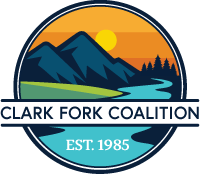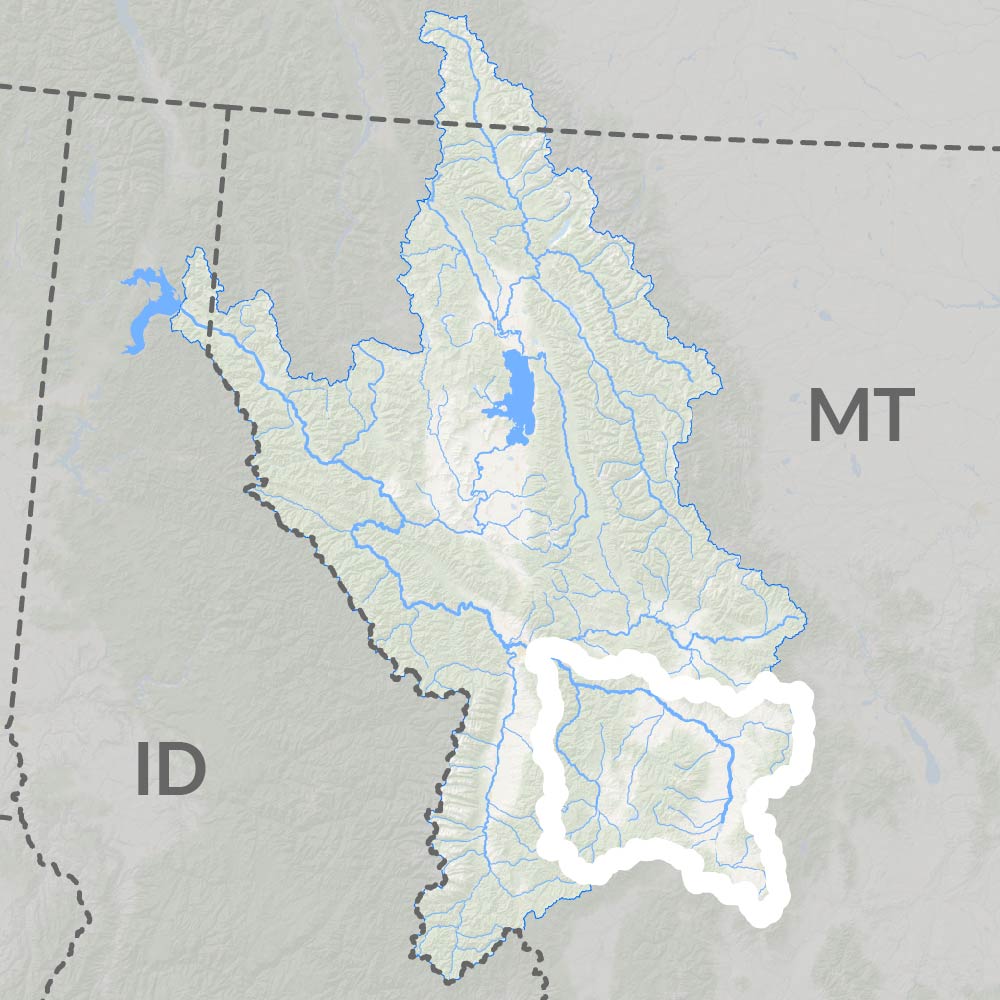Upper Clark Fork
The Clark Fork River rises from the headwaters of Snt’apqey, now called Silver Bow Creek, along the Continental Divide near Butte, Montana, then merges with Warm Springs Creek near Deer Lodge. Part of a common hunting area for local tribes, people fished for bull trout in its clear waters.
Once cherished as a fishery and vital habitat, after over a century of mining, the Upper Clark Fork River is now the center of the nation’s largest Superfund site — and one of the most remarkable restoration stories in the world.
From the 1860s to the late 20th century, massive mining and smelting operations in Butte and Anaconda and related logging, roadbuilding, rail-building, and large-scale agricultural development profoundly impacted the headwaters and tributaries of the Clark Fork watershed and surrounding communities. Pollution from these industries damaged aquifers, landscapes, and the river system for hundreds of square miles. Then, in 1908, a catastrophic flood carried tons of metals-laced sediment from the mines downstream, leaving legacy contamination that covers over 120 miles of floodplain.
But challenges on the Upper Clark Fork go beyond Superfund remediation. The upper river also faces chronic drought, sediment impairments, and lack of adequate flow. New climate realities mean the Upper Clark Fork experiences more frequent periods of extreme heat and flash drought that cause flows to plummet and temperatures to spike rapidly.
Our focus in the Upper Clark Fork
Bring about the best possible cleanup and restoration of the mining-damaged Upper Clark Fork, resulting in a healthy, protected river.
In the 1980s, the Clark Fork Coalition worked with concerned residents and other groups to advocate for Superfund designation. The Environmental Protection Agency eventually listed the Upper Clark Fork from Warm Springs Creek to the Milltown Reservoir. Cleanup finally began at the Milltown Dam in 2006 but did not start in the upstream phases until 2012.
We continue to evaluate the Superfund cleanup and offer science-based technical input to state agencies. In addition, we enhance cleanup on the main stem of the river with integrated stream restoration projects on tributaries to help heal the headwaters. The Coalition negotiates water leases that conserve irrigation water and add flows to dry or disconnected creeks. We also improve riparian habitat and fish passage in partnership with landowners.
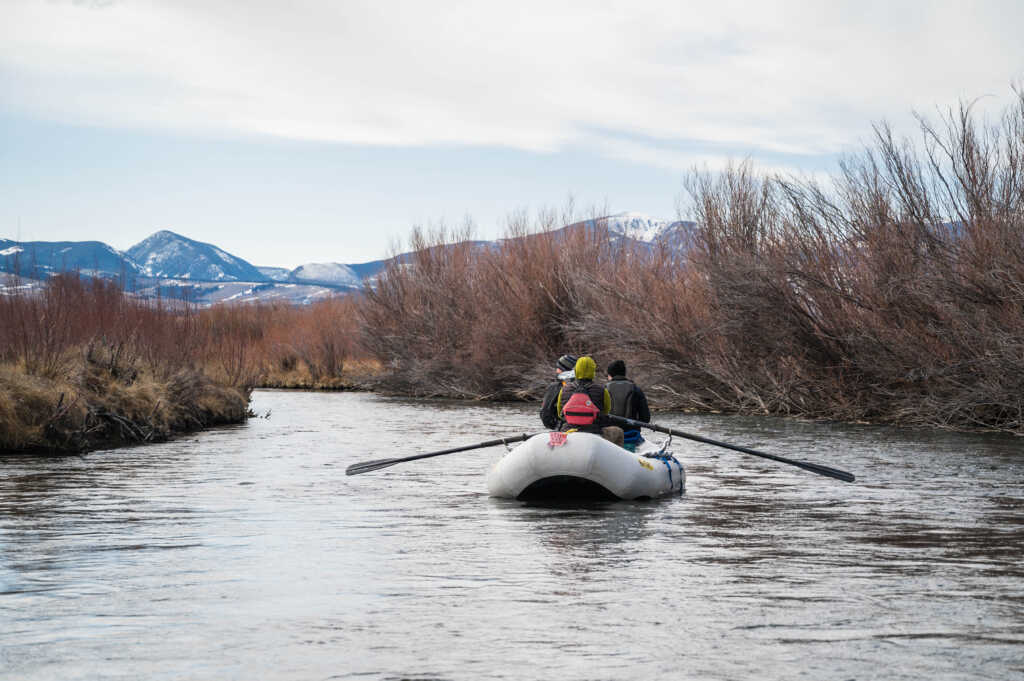
Update on the Superfund Cleanup of the Upper Clark Fork
What’s happening now in the Upper Clark Fork?
-
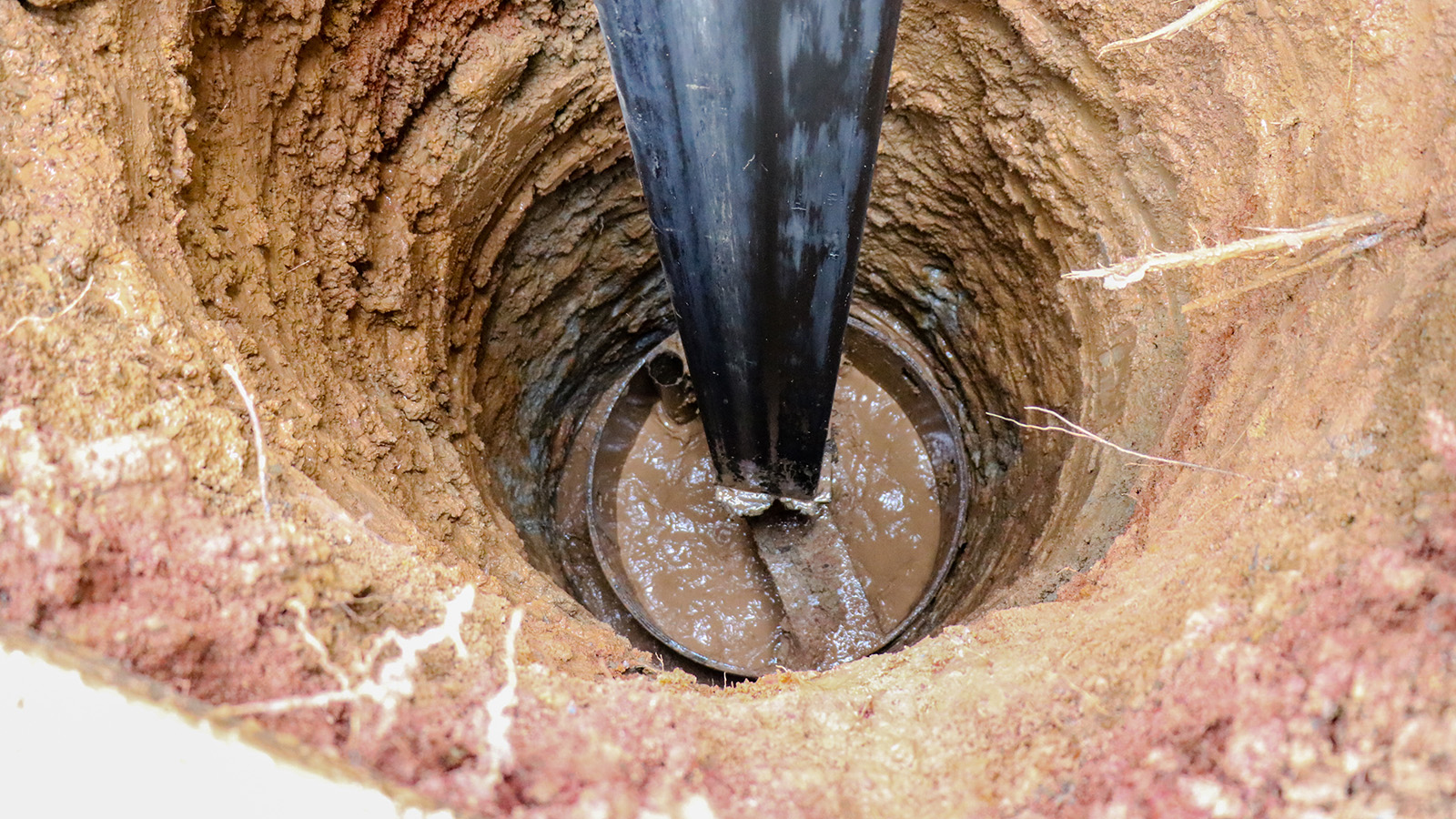 Exempt Wells Legal Challenge
Exempt Wells Legal Challenge -
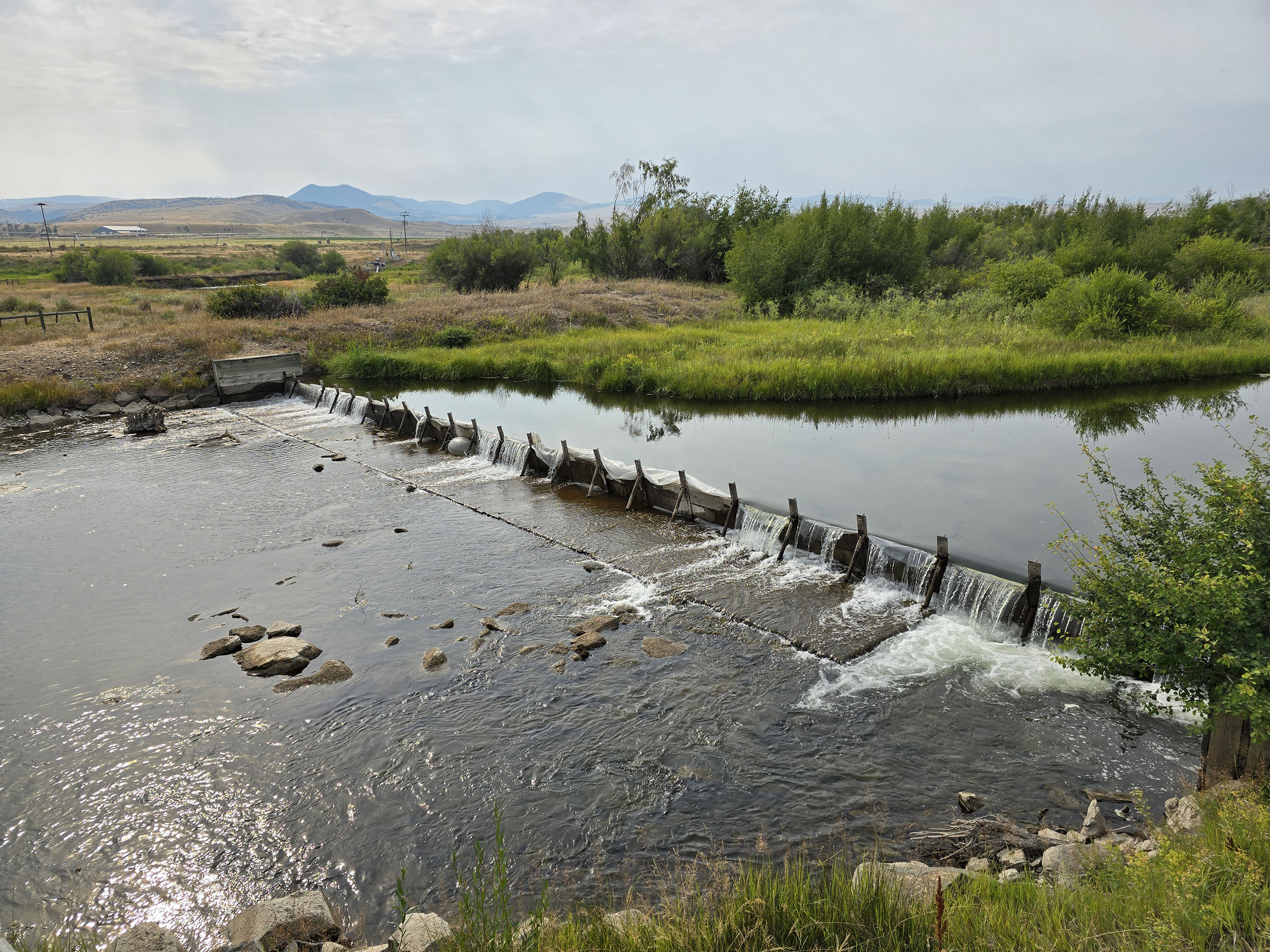 Sager Lane Pin & Plank Diversion Removal
Sager Lane Pin & Plank Diversion Removal -
 Valiton Ditch Split Season Lease
Valiton Ditch Split Season Lease -
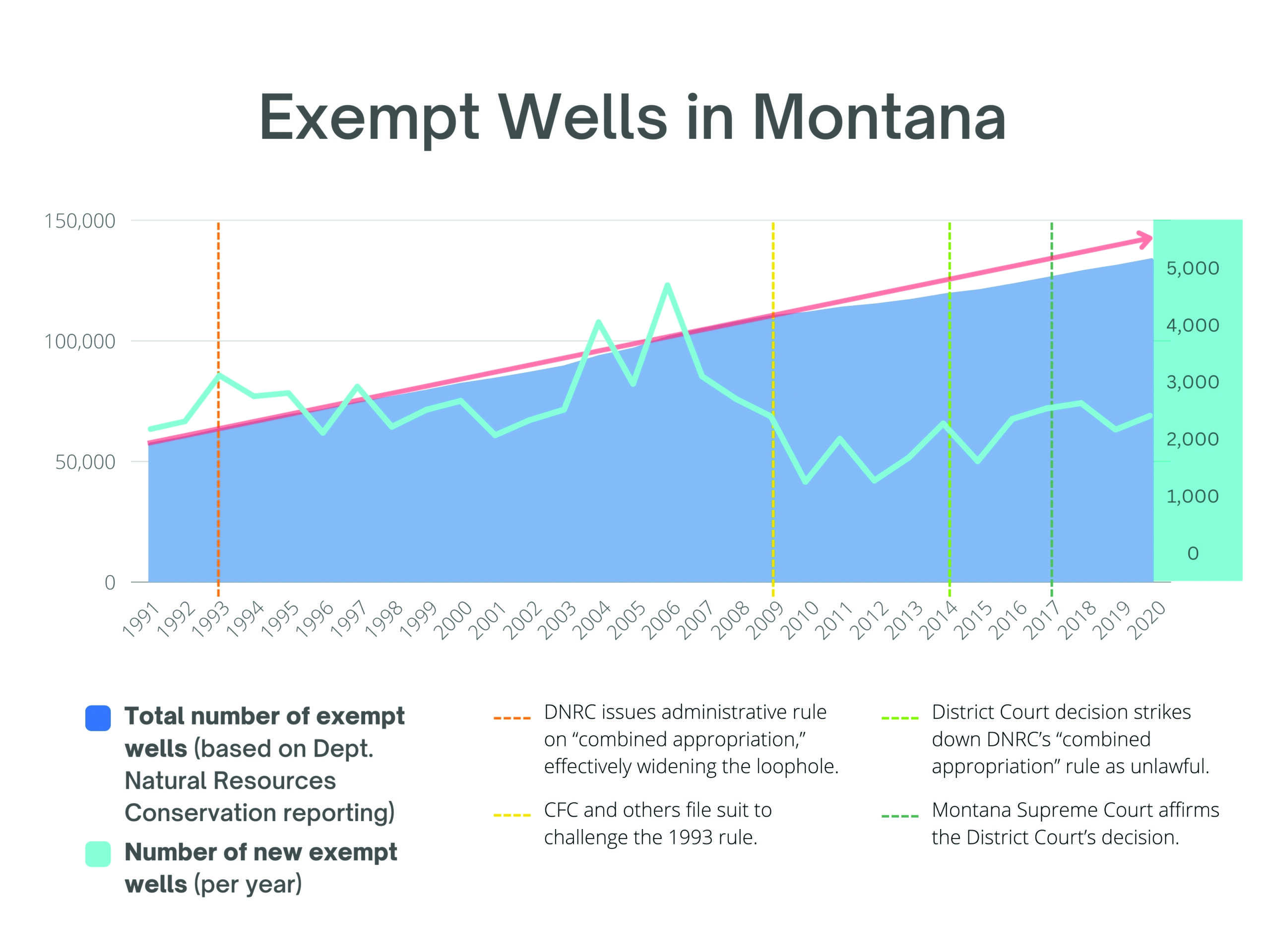 Exempt Wells Loophole
Exempt Wells Loophole
What we’ve accomplished in the Upper Clark Fork
-
 Dry Cottonwood Creek RanchCattle and Clean Water at Dry Cottonwood Creek Ranch From 2005 to 2021, Clark Fork Coalition and partners ran Dry Cottonwood Creek Ranch (DCCR), a 2,300-acre working cattle ranch in Montana’s Deer Lodge Valley, to be a living classroom for the largest river repair job in the West, located in…
Dry Cottonwood Creek RanchCattle and Clean Water at Dry Cottonwood Creek Ranch From 2005 to 2021, Clark Fork Coalition and partners ran Dry Cottonwood Creek Ranch (DCCR), a 2,300-acre working cattle ranch in Montana’s Deer Lodge Valley, to be a living classroom for the largest river repair job in the West, located in… -
 Cottonwood-Baggs Fish PassageIn the late fall of 2019, the Coalition finished a stream reconnection project on Baggs Creek and Cottonwood Creek in the upper Clark Fork. Eight miles of stream was opened to fish passage for the first time in many decades. Cottonwood Creek also benefited from a large fish screen project…
Cottonwood-Baggs Fish PassageIn the late fall of 2019, the Coalition finished a stream reconnection project on Baggs Creek and Cottonwood Creek in the upper Clark Fork. Eight miles of stream was opened to fish passage for the first time in many decades. Cottonwood Creek also benefited from a large fish screen project… -
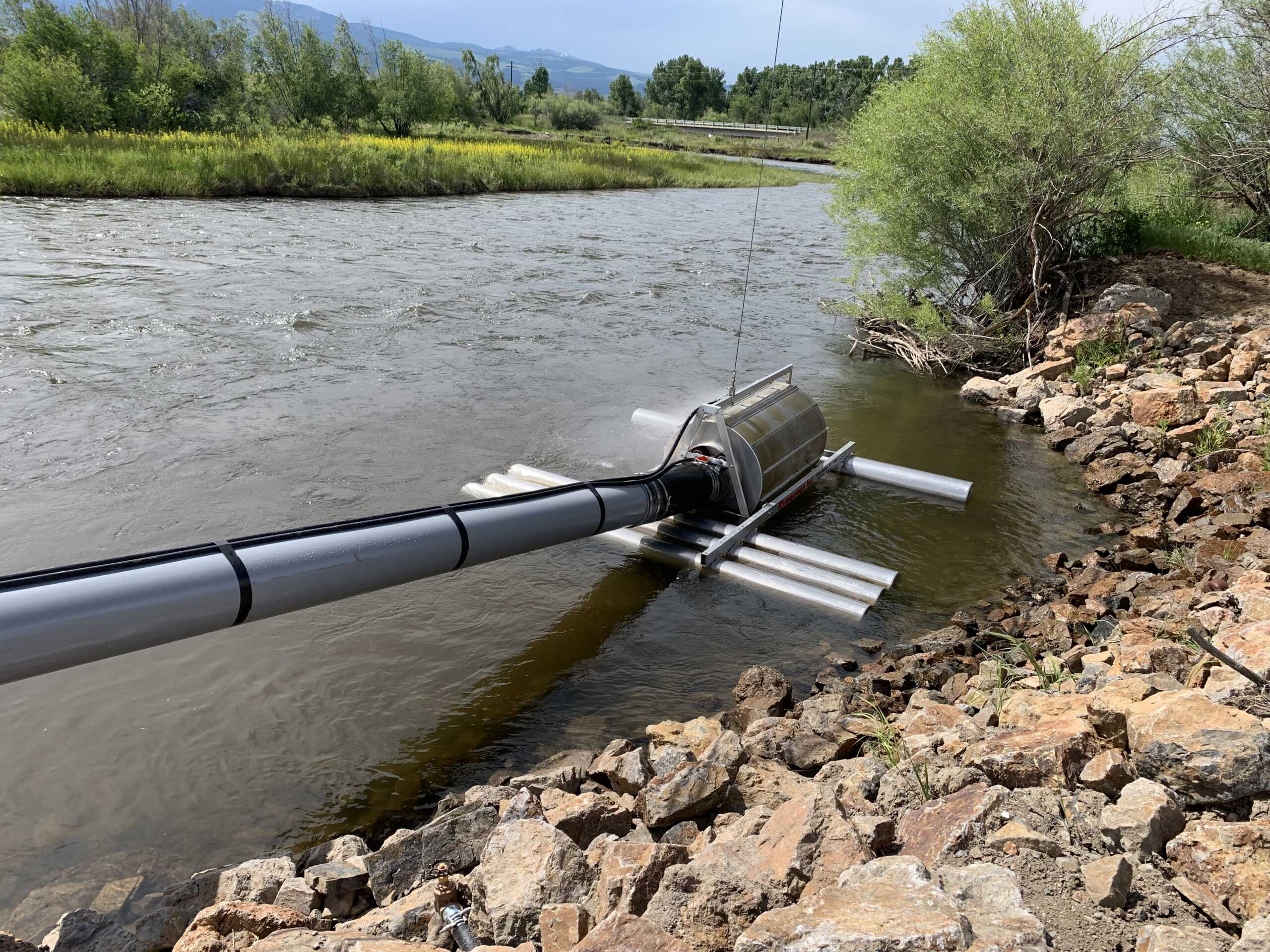 Broken Circle Diversion UpgradeHistorically, Broken Circle Ranch rebuilt their irrigation diversion every summer using broken concrete and streambed material, which resulted in passage issues for fish and recreationists. In 2023, the ranch worked with the Coalition to install an innovative floating fish screen and river pump that requires minimal structure in the river…
Broken Circle Diversion UpgradeHistorically, Broken Circle Ranch rebuilt their irrigation diversion every summer using broken concrete and streambed material, which resulted in passage issues for fish and recreationists. In 2023, the ranch worked with the Coalition to install an innovative floating fish screen and river pump that requires minimal structure in the river… -
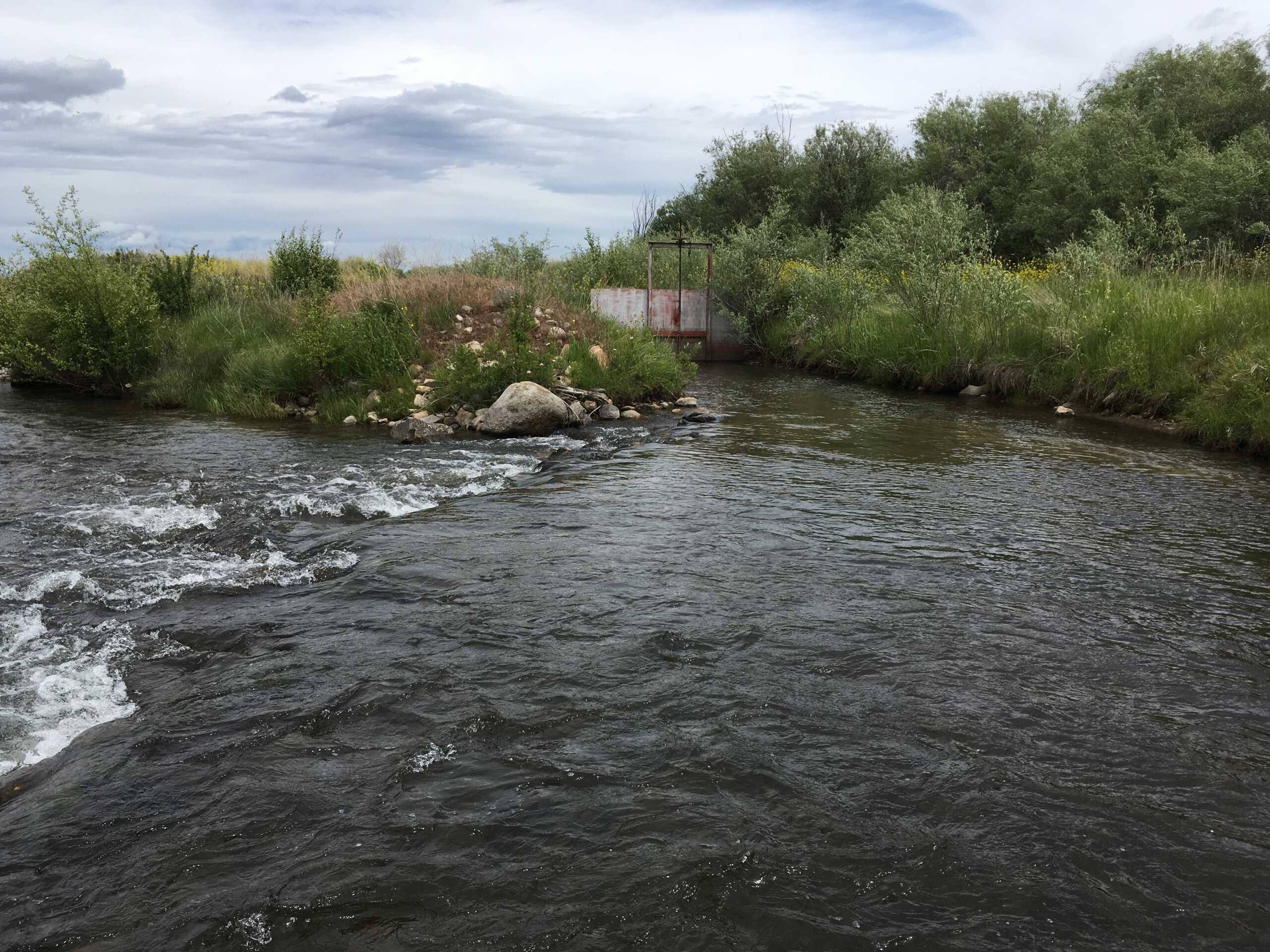 Helen-Johnson Ditch ProjectThe Helen Johnson project reduced irrigation withdrawals from the mainstem of the Upper Clark Fork by over 15 cfs on three ranches. It removed a fish barrier and eliminated entrainment issues. The project replaced a portion of the ditch on the Lampert Ranch with a 2-mile stock water pipeline that…
Helen-Johnson Ditch ProjectThe Helen Johnson project reduced irrigation withdrawals from the mainstem of the Upper Clark Fork by over 15 cfs on three ranches. It removed a fish barrier and eliminated entrainment issues. The project replaced a portion of the ditch on the Lampert Ranch with a 2-mile stock water pipeline that… -
 In-stream Sediment Sampling 2022In partnership with Fish, Wildlife & Parks, Natural Resources Damage Program, and the University of Montana – Western, we measured the amount of sediment in streams along several reaches of the Upper Clark Fork River. Students collected over 70 in-stream sediment samples to see if sediment levels affect trout…
In-stream Sediment Sampling 2022In partnership with Fish, Wildlife & Parks, Natural Resources Damage Program, and the University of Montana – Western, we measured the amount of sediment in streams along several reaches of the Upper Clark Fork River. Students collected over 70 in-stream sediment samples to see if sediment levels affect trout… -
Upper Clark Fork
Support the river
Become a member of the Coalition and help restore the watershed by donating today!
